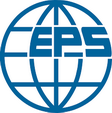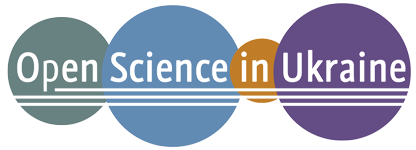Comparative analysis of conventional and bifaical solar cells under various illumination conditions
DOI:
https://doi.org/10.15330/pcss.25.4.844-852Keywords:
Silicon, Bifacial Solar Cell, Sentaurus TCAD, Ray Tracing, Efficiency, Fill FactorAbstract
In this work, through a detailed analysis of the mechanisms of photon absorption, photogeneration processes and the efficiency of nonequilibrium charge carriers’ collection under conditions of rear and double-sided illumination, the initial physical parameters of the internal layers and the design of double-sided sensitive solar cells with n+-p junction on the front side has been studied. The modern numerical simulation method was used to study the solar cells. Models of silicon solar cells (SC) contains p+-p-n+ structure with separating n+-p-junction near the frontal (upper) surface. Increasing the doping concentration in the p-region notably enhances the steepness of the I-V curve, indicative of improved quality of the solar cell and p-n junction. Specifically, an optimal doping concentration of 1015 cm⁻³ yields the highest efficiency, demonstrating the critical role of doping concentration in performance optimization. Furthermore, variations in doping concentration exert differential impacts on key parameters. Notably, open-circuit voltage, fill factor, efficiency, maximum output power, and serial resistivity exhibit distinct responses to changes in doping concentration. For instance, an increase in doping concentration from 1013 cm⁻³ to 1015 cm⁻³ results in notable improvements across these parameters, highlighting the significance of precise doping control in enhancing solar cell performance. When, photoelectric parameters of conventional and double side sensitive solar cells are compared, it has been found that the short circuit current and open circuit voltage of double side solar cell are 2 times and 18 mv greater than those of conventional solar cell.
References
D. Kurz, K. Lewandowski, M. Szydłowska, Analysis of efficiency of photovoltaic bifacial cells. In Proceedings of the ITM Web of Conferences 19/2018, Pozna´n, Poland, 01020 (2018); https://doi.org/10.1051/itmconf/20181901020.
T. Aoyama, M. Aoki, I. Sumita, Z. Yoshino, A. Ogura, Effect of Glass Frit in Metallization Paste on the Electrical Losses in Bifacial N-type Crystalline Silicon Solar Cells. In Proceedings of the 43rd IEEE Photovoltaic Specialists Conference (PVSC), Portland, OR, USA, 2854 (2016); https://doi.org/10.1109/PVSC.2016.7750175.
A. Schmid, C. Reise, Realistic Yield Expectations for Bifacial PV Systems—An Assessment of Announced, Predicted and Observed Benefits, Fraunhofer Institute for Solar Energy Systems ISE, 2015, Kolonia. Url: https://www.tuv.com/media/corporate /solar1/pvmodulworkshop2/42ReiseRealisticYield_Expectations_for_Bifacial_PV_Systems.pdf
H. Langels, F. Gannedahl, BiFacial PV Systems A Technological and Financial Comparison between BiFacial and Standard PV Panels, Uppsala, 2018. Available online: https://www.diva-portal.org/smash/get/diva2:1218780/FULLTEXT01.pdf
International Technology Roadmap for PV(ITRPV) 2018 Results, Version 10. Available online: https://itrpv.vdma.org/en/
X. Wang, A. Barnett, The Evolving Value of Photovoltaic Module Efficiency, Appl. Sci., 9, 1227 (2019); https://doi.org/10.3390/app9061227.
G.J. Faturrochman, M.M. de Jong; R. Santbergen, W. Folkerts, M. Zeman, A.H.M. Smets, Maximising annual yield of bifacial photovoltaic noise barriers, Sol. Energy, 162, 300 (2018); https://doi.org/10.1016/j.solener.2018.01.001.
J. Gulomov, R. Aliev. Influence of the Angle of Incident Light on the Performance of Textured Silicon Solar Cells, Journal of Nano- and Electronic Physics, Volume 13(6), 060361 (2021); https://doi.org/10.21272/jnep.13(6).06036.
J. Gulomov, R. Aliev. Analyzing periodical textured silicon solar cells by the TCAD modeling, Information technologies mechanics and optics, 21(5), 626 (2021); https://doi.org/10.17586/2226-1494-2021-21-5-626-632.
J. Gulomov, R. Aliev. Study of the Temperature Coefficient of the Main Photoelectric Parameters of Silicon Solar Cells with Various Nanoparticles, Journal of Nano- and Electronic Physics, 13(4), 040331 (2021); https://doi.org/10.21272/jnep.13(4).04033.
J. Gulomov, R. Aliev. Numerical analysis of the effect of illumination intensity on photoelectric parameters of the silicon solar cell with various metal nanoparticles, Nanosystems: physics, chemistry, mathematics, 12(5), 569 (2021); https://doi.org/10.17586/2220-8054-2021-12-5-569-574.
Caixia Zhang, Honglie Shen, Luanhong Sun et al. Bifacial p-Type PERC Solar Cell with Efficiency over 22% Using Laser Doped Selective Emitter, Energies, 13, 1388 (2020); https://doi.org/10.3390/en13061388.
Jinyoun Cho, Hae-Na-Ra Shin, Jieun Lee et al. 21%-Efficient n-type rear-junction PERT solar cell with industrial thin 156mm Cz single crystalline silicon wafer, 5th International Conference on Silicon Photovoltaics, SiliconPV. 2015, Energy Procedia, 77, 279 (2015); https://doi.org/10.1016/j.egypro.2015.07.039.
W. Luo, et al., Potential-induced degradation in photovoltaic modules: a critical review, Energy Environ. Sci., 10(1), 43 (2017).
J. Bauer, V. Naumann, S. Großer et al. On the mechanism of potential-induced degradation in crystalline silicon solar cells, Phys. Status Solidi Rapid Res. Lett., 6(8), 331(2012); https://doi.org/10.1002/pssr.201206276.
V. Naumann, O. Breitenstein, J. Bauer, C. Hagendorf, Search for microstructural defects as nuclei for PID-shunts in silicon solar cells, 2017 IEEE 44th Photovoltaic Specialist Conference, PVSC), 1376 (2017); https://doi.org/10.1109/PVSC.2017.8366322.
Downloads
Published
How to Cite
Issue
Section
License
Copyright (c) 2024 R. Aliev, M. Komilov, S. Aliev, I. Gulomova

This work is licensed under a Creative Commons Attribution 3.0 Unported License.









